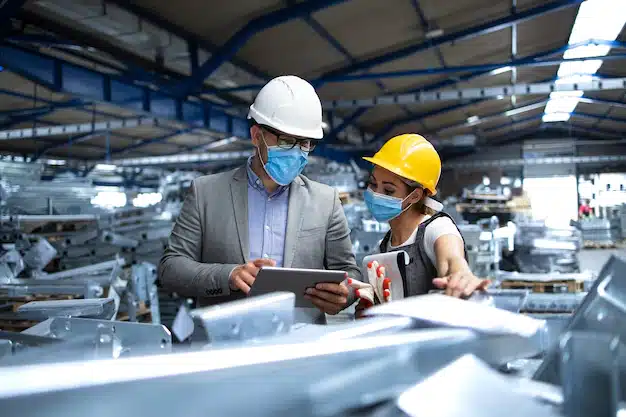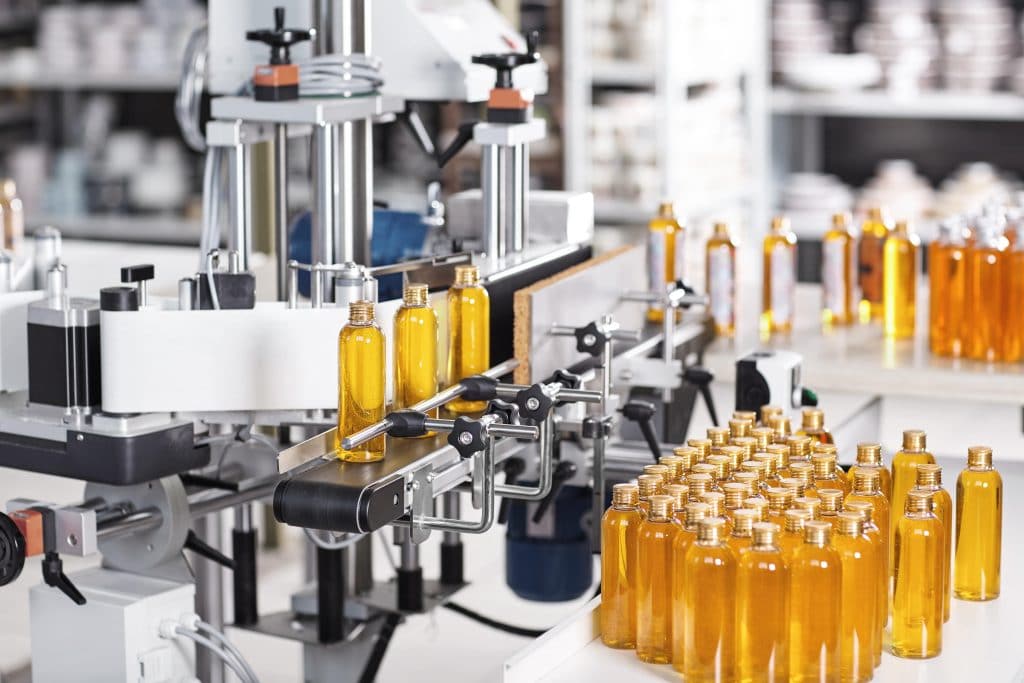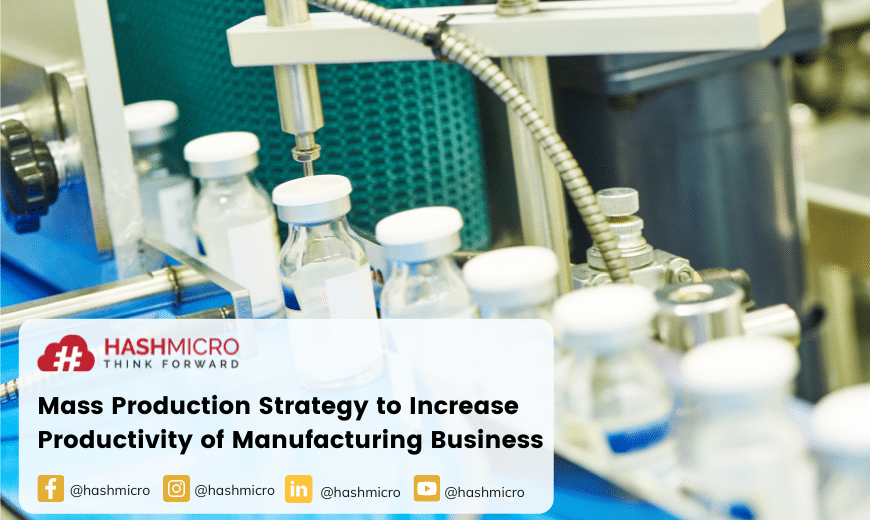There are three main elements in economic activity that consist of production, distribution, and consumption. In this article, we will discuss the production process, specifically mass production. Large manufacturing companies will usually choose this type of production to produce their goods.
Managing the complexity of manufacturing processes often calls for robust systems. However, setting up an automated assembly line can be challenging due to the significant initial investment in time and resources. Business owners must also ensure error-free production designs, as mistakes can lead to costly redesigns.
Additionally, frequent revisions may be necessary to accommodate regulatory changes, evolving product designs, or shifting customer needs. Therefore, we believe that the only ideal solution for your business is to adopt an efficient manufacturing system that streamlines operations, minimizes errors, and adapts to evolving business needs.
And you don’t have to search for it, because you’re in the right place. With HashMicro Manufacturing System, your business can automate WIP calculations, ensure on-time production, generate accurate reports, and maintain seamless control over inventory and procurement; all in one integrated solution. For more insight, continue reading this article.
Key Takeaways
|

Mass Production Meaning
The meaning of mass production is a system of continuously producing goods with large-scale quantities of goods. Mass production can create thousands or even millions of products simultaneously. Large industrial companies and factories with hundreds of employees usually carry out the mass production process. Moreover, the flow of products is always running continuously. So, it is not surprising that a large factory can produce so many products in such a short time.
Characteristics of Mass Production Process
1. Huge amount of production
The first characteristic that most characterizes mass production is a large amount of output in a short time hence the meaning mass produce. Mass production can reach thousands or even millions of products in a short time, depending on the type of goods.
2. Similar products
Mass production is usually only for producing similar products. Because with the same flow and in a short time can produce considerable quantities of goods. Meanwhile, to make different types of products, it is necessary to create another production line and a product that is mass produce usually is the same to one another.
3. Sequence and in order work processes
Goods work in mass production is carried out under the sequence of production processes ordered according to the production flow.
4. The use of machines and repetitive work processes
In producing numerous goods in such a short time, the only way is to use machines. This is because the machines can operate continuously, in contrast to limited human power that will hard to rely on to mass produce in a big scale.
5. Minimal supervision
The more sophisticated the machines that manufacturers use, the less monitoring needs to be provided. This is because the production process is automated. Therefore, the supervisor’s job is to monitor only defective production areas or machines not functioning correctly.
Discover More: Best ERP software – Learn about the best ERP software available in Singapore and determine the ideal option for your business.
Steps to Conduct Mass Production

Before entering the actual production process, several stages must be met first, as follows.
1. Product requirements documentation
Before starting the production phase to mass produce, the production manager needs to make the product requirements documents. However, with responsibility for leading and producing this document, they must seek input and final approval from all other team leaders, such as Engineering, Sales, QA, Executive, and Marketing. After all team leaders approve all product requirements documentation, this document will be the basis, and all subsequent product decisions must be following what is in this documentation. The product requirements documentation is usually in the form of:
- Complete list of features that will include in the product
- Specific performance metrics that each element must meet
- Estimated production volume
- Target cost
- Target product release schedule
- Product roadmap
2. Engineering validation and testing
The second stage is engineering validation and testing or EVT. The validation and testing phase of this technique aims to design and build an instance of a product that meets the functional requirements of the PRD. At this stage, the engineering team uses all necessary ways to implement each feature described in the previous product requirements documentation that will be mass produce. The main objective of the technical validation and testing process is to identify the overall risks of the requirements described in the PRD and find ways to eliminate or significantly reduce them.
3. Design validation and testing
The Design validation and testing (DVT) stage aims to continuously improve the quality and design of the product to match the final look and feel of the desired outcome. This is when manufacturers select materials and mechanical designs that meet the final form, fit and aesthetic requirements outlined in the PRD. All materials and components chosen in this revision are materials used in the final production version of the goods. A product can exit the DVT stage after approval has been made and fulfills all the functional and aesthetic requirements of the PRD.
4. Production validation and testing
After the DVT stage, there is a validation and production testing stage which is necessary to have a serious conversation with its suppliers and manufacturers. Because this stage is pre-production or PVP (Production Validation and Testing), it is essential to ensure that the producer can create DVT products with the volume and target cost stated in the PRD.
Companies must outsource the manufacture and assembly of products. Companies should engage with suppliers to solicit feedback on designs to ensure your company can achieve production goals. Another objective of the PVT stage is to strengthen the production process and set up the supply chain. The best method is to pre-produce your product using the actual supply chain and manufacturing assets.
5. Production process
After all the documentation requirements are met, then the manufacturer can start the production process itself. At this stage, the responsibility lies with the manufacturer to procure parts, assemble, and test them to meet the company’s production needs or demands. With the product design entry into the production stage, it means that the manufacturer will produce and sell the ready version of the product to the customer in the appropriate quantity. But companies have other responsibilities, namely to ensure quality and production results while keeping the costs under control.
Also Read: Best Cloud Manufacturing Software – Explore the best software options available this year and find the right fit for your business needs.
Advantages and Disadvantages of Mass Production

The Advantages of Mass Production
- Increased company productivity
With mass production, the productivity of a company will undoubtedly increase. This is because mass production makes the company always able to meet consumer needs for a product, even in large quantities, and provide timely product service in the market. - Reduce production costs
Production costs, which consist of variable costs and fixed costs, can be saved through mass production, especially at fixed costs. Fixed costs are sure to be incurred by producers, regardless of whether or not the product is made or the number of products produced. Therefore, with mass production, the fixed costs charged to each product unit will be smaller so that producers and companies can reduce selling prices a little. - Streamline production time
In production, manufacturers use machines that have a large capacity. With these machines, the production process can produce thousands or millions of products in just a few hours. Indeed, it will significantly reduce the production time so that the production process will be more efficient.
This large number of products can later become stock and stored in the warehouse. Use a warehouse management system to optimize warehouse space usage, calculate and track warehouse capacity automatically.
The Disadvantages of Mass Production
- Requires large capital costs
To accommodate production in large quantities, producers need to prepare high costs for machinery and raw materials, including maintenance of these machines. So even though mass production can save production costs, it still requires enormous capital costs to start. - Less flexible
Since mass production relies more on engine power than manuals, the process will run according to predetermined procedures, conditions, and sequences. Accordingly, failure to perform any of these processes or procedures will result in production errors. This strategy is less flexible because it will not be able to repair only a small number of products given the production of so many in such a short time. - Risk of a complete overhaul
Still related to point number two, the company needs to think carefully when designing its production flow. If something goes wrong, the entire supporting infrastructure needs to be rebuilt. Of course, that would cost a lot of money and effort. - Employee demotivation
High production capacity also forces workers to adapt to these goals and targets. This makes workers feel tired. Even though the workforce’s work is not as complicated as the production done by machines, if workers do the same job continuously, they will likely lose their intention and motivation to work.
Conclusion
Mass production is a continuous production system of goods with large-scale quantities of goods, ranging from hundreds or even millions of products that can be produced simultaneously. Mass production itself has many advantages, especially for manufacturers who want to increase productivity and streamline production time. There are several stages and one must complete document requirements first before conducting the production process.
HashMicro Manufacturing Management System can help your manufacturing company to manage the production process quickly. Experience features for automated WIP calculations, on-time production processes, accurate reporting, and controlled inventory and procurement with an all-in-one integrated system. Schedule a free demo now to experience the transformational power it brings to your operations.














